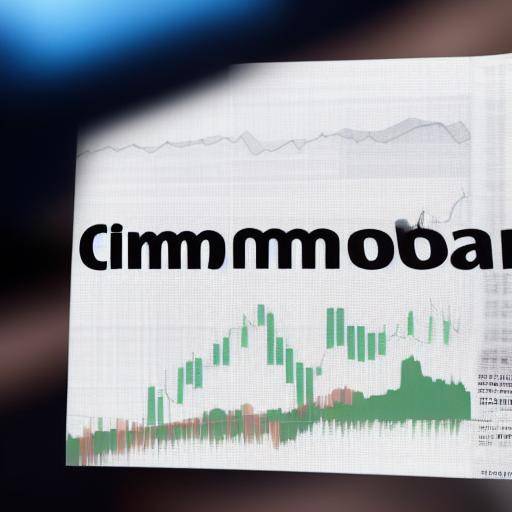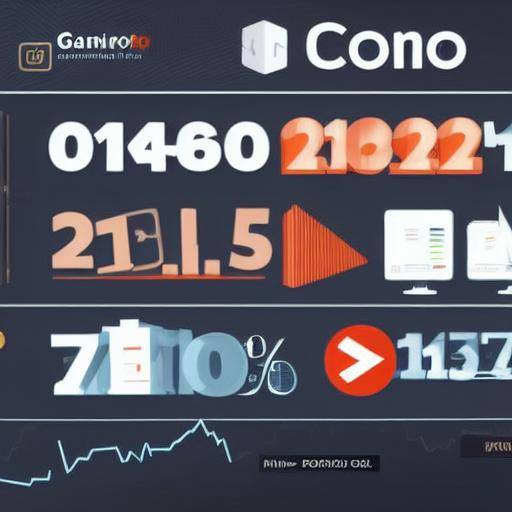
The world of investment is fascinating and complex, offering investors a wide range of strategies and approaches to achieving success. Two key approaches in the world of investment are technical analysis and fundamental analysis. Both methods aim to make informed decisions about the purchase or sale of financial assets, but differ in their approaches and tools. In this article, we will thoroughly explore technical analysis and fundamental analysis, comparing them in the context of investment in the stock exchange. We will discover their differences, similarities, practical applications and strategic considerations so you can make informed decisions in your stock market operations.
Introduction
Technical analysis and critical analysis are two key approaches to understanding financial markets and making investment decisions. While both methods share the common goal of identifying profitable opportunities, they differ in their theoretical foundations, tools and approaches. In this article, we will explore these approaches in depth, analyzing their advantages, challenges, practical applications and their relevance in the current investment landscape in the bag.
History and Background
The technical analysis has its roots in the 18th century, when price charts began to be used to predict future movements in rice markets in Japan. However, it was not until the end of the nineteenth and early twentieth century that technical analysis began to take shape with Dow's theory. Charles Dow, a pioneer in stock exchange analysis, proposed that prices already incorporate all relevant information and that follow predictable patterns. This idea laid the foundations for modern technical analysis.
On the other hand, the fundamental analysis is rooted in the study of the financial statements of the companies and the evaluation of their foundations to determine their intrinsic value. The first significant developments in the fundamental analysis date back to the nineteenth century, when quantitative methods began to be applied to value financial assets. Since then, the fundamental analysis has evolved over time, incorporating a wide range of economic, financial and sectoral variables in its asset assessment.
Analysis in Deep
Both methods offer unique benefits for investors. The technical analysis provides tools to identify patterns and trends in price charts, which can be useful for predicting future market movements. On the other hand, the fundamental analysis provides a detailed view of the financial health and growth potential of a company, which can help identify undervalued opportunities in the market.
However, technical analysis also faces criticism for its lack of attention to the underlying foundations of financial assets, which can lead to decisions based on patterns of behaviour that do not reflect economic reality. On the other hand, fundamental analysis can ignore short-term trends and patterns that are fundamental to short-term operators.
Integral Examination
In practice, many investors use a combination of technical and fundamental analysis to make informed decisions. This hybrid strategy is known as technical-fundamental analysis, and leverages the strengths of both methods to gain a more comprehensive understanding of financial markets.
As for the investment strategy in the stock exchange, it is important to consider the risks and rewards associated with each approach. While technical analysis can be useful in identifying input and output points in the short term, the fundamental analysis can provide a long-term perspective on the financial health and growth potential of a company.
Comparative analysis
When comparing technical analysis with fundamental analysis, it is important to note that both approaches have their advantages and disadvantages. While the technical analysis focuses on price and market patterns, the fundamental analysis focuses on the economic and financial foundations of companies. While technical analysis can be useful in identifying short-term trends, the fundamental analysis can provide a stronger understanding of the intrinsic value of a financial asset.
Practical Tips and Accessible Advice
When making investment decisions in the stock exchange, it is essential to consider a variety of factors. Here are some practical tips for integrating technical analysis and fundamental analysis into your investment strategy:
- It uses technical analysis to identify input and output points in the short term, taking advantage of market patterns and trends.
- Use the fundamental analysis to evaluate the financial health and long-term growth potential of the companies you are interested in investing in.
- Maintain a balance between technical and fundamental approaches to a more comprehensive view of financial markets and make informed decisions.
Industry Perspectives and Expert Reviews
Investment experts recognize the importance of combining technical analysis and critical analysis in investment decision-making. Some highlight the importance of adapting the investment strategy to market conditions, using hybrid methods that take advantage of the strengths of both approaches.
Case Studies and Real Life Applications
To illustrate the practical application of the technical and fundamental analysis, we will examine real case studies that demonstrate how these approaches can influence investment decisions in the stock exchange. These case studies will provide a detailed overview of how investors have used technical and critical analysis to achieve success in specific contexts.
Future Trends and Predictions
As financial markets evolve, it is important to consider future trends and predictions related to technical and critical analysis. We will explore current projections and emerging trends that could influence how investors use these methods in the future.
Conclusion
In short, technical analysis and fundamental analysis offer different but complementary approaches to investment in the stock exchange. While the technical analysis focuses on the study of price and trends patterns, the fundamental analysis evaluates the economic and financial foundations of companies. By combining both approaches, investors can gain a more comprehensive understanding of financial markets and make informed decisions.
It is important to remember that there is no single approach that guarantees success in investment. Each method has its strengths and limitations, and the key lies in understanding how to effectively integrate them. By adopting a holistic approach that leverages the strengths of both methods, investors can be better prepared to face challenges and take advantage of opportunities in financial markets.
Frequently asked questions
What is the main difference between technical analysis and fundamental analysis?
The technical analysis focuses on the study of market price and trends patterns, using tools such as graphics and oscillators to make investment decisions. On the other hand, the fundamental analysis evaluates the economic and financial foundations of companies, taking into account factors such as income, expenditure, debts and growth potential.
What are the advantages of technical analysis?
Technical analysis can be useful for identifying short-term entry and exit points, as well as for detecting trends and patterns in financial markets. You can also provide clear signs of purchase or sale through tools such as mobile media, RSI and MACD.
What are the limitations of fundamental analysis?
One of the limitations of fundamental analysis is that it can ignore short-term trends and patterns that are crucial
How can I integrate technical analysis and fundamental analysis into my investment strategy?
To integrate technical analysis and fundamental analysis, it is important to consider the combination of both tools in a balanced manner. For example, you can use the technical analysis to identify short-term entry and exit opportunities, while the fundamental analysis can help you assess the long-term potential of an investment. Maintaining a balance between both approaches will allow you to gain a more comprehensive understanding of the financial assets you are interested in investing in.
What role do technical analysis and fundamental analysis play in making decisions in the bag?
Both technical analysis and fundamental analysis play key roles in making decisions in the bag. While technical analysis can provide opportunistic signals in the short term, the fundamental analysis can offer a broader and longer-term perspective on the financial health of a company. Integrating both approaches can provide a more comprehensive view of financial assets.
What are the hybrid strategies that combine technical analysis and fundamental analysis?
Hybrid strategies often combine elements of technical and fundamental analysis to gain a more comprehensive understanding of financial markets. For example, some investors can use the technical analysis to identify trends and patterns, while employing the fundamental analysis to assess the financial health and long-term growth potential of a company.
How can I improve my skills in technical analysis and fundamental analysis?
To improve your skills in technical analysis and fundamental analysis, it is important to spend time studying and practicing the use of specific tools and techniques. This may include reading specialized books, conducting training courses, practising in simulated environments and tracking news and events relevant to financial markets.
What are the key considerations in using technical and fundamental analysis in volatile markets?
In volatile markets, it is crucial to take into account the need to adapt your investment strategies to market conditions. Both technical analysis and fundamental analysis can provide valuable signals in volatile environments, but it is important to adjust your approaches to taking into account the uncertainty and variability of the market.
What is the relevance of technical and fundamental analysis in the context of the global economy?
Both technical analysis and fundamental analysis are relevant in the context of the global economy, as they offer tools and perspectives to understand global financial markets. Investors can use these approaches to assess investment opportunities in different geographies and sectors, taking into account economic, political and social factors.
In conclusion, technical analysis and fundamental analysis are two fundamental approaches in the world of investment. By understanding differences, similarities, practical applications and strategies to integrate both methods, investors can take a more informed and comprehensive approach to making decisions in the stock exchange. By combining the strengths of each approach, investors can be better prepared to face challenges and take advantage of opportunities in financial markets.























